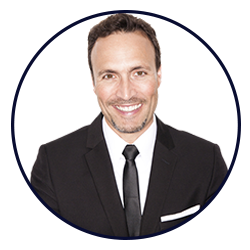You’ve probably heard the old adage about an ounce of prevention being worth a pound of cure, right? Perhaps nowhere is this more true than with your health. After all, if given a choice between preventing disease and treating it, who wouldn’t choose to stop sickness before it starts?
If you’re like most men, you probably don’t think much about healthcare beyond getting a check-up once a year. Unfortunately, the annual physical simply isn’t designed to prevent illness or reduce mortality, an issue I explore in my 5 P’s of Medicine video. So if you’re relying on this once-a-year appointment to keep you healthy, you may be missing something—and you won’t know until it’s too late to prevent or reverse the problem.
The good news is, you have it within your power to prevent illness and optimize your health. Here are some steps you can take today to stay healthy tomorrow (and beyond).
Find Your Purpose, Extend Your Life
Remember when I mentioned my 5 P’s of Medicine? Purpose is one of them. I’ve been astounded by the ways that having a clear sense of purpose can help my patients achieve their goals, and I’ve done a lot of research on the topic. I even gave a TEDx Talk about how people can change their lives in big, powerful ways when they commit to focusing on what’s important to them.
Living with intention and holding yourself accountable (or working with a professional who can check in with you) doesn’t just optimize your health. It may even extend your life, according to research. In one study, people who believed in a higher purpose lowered their risk of death by around 20 percent. After all, when you’re living your best life, you want it to last as long as possible.
Get the Most Bang for Your Workout Buck
It’s no secret that exercise helps lower your risk of developing health problems like heart disease, obesity, type 2 diabetes, certain types of cancer, depression, and many more. It’s also a great way to reduce chronic stress, which can have a serious impact on your physical and mental health.
But while there’s no such thing as a “bad” workout, certain types of exercise have been shown to be particularly beneficial. High-intensity interval training (HIIT), where you alternate between periods of going hard and resting, may help reduce age-related muscle decline. It’s also a highly effective fat-burning workout.
And while strength training helps build muscle and may bump up testosterone levels, aerobic exercise appears to be king when it comes to protecting the brain. Studies show cardio can boost brain function and prevent cognitive decline. Not only can exercise prevent changes in the brain that affect cognition, it may even be able to reverse their effects.
Take Testing to the Next Level
One of the biggest reasons your annual checkup doesn’t offer much in the way of prevention? The standard tests typically covered by insurance aren’t always able to detect problems, much less prevent them.
The best way to get ahead of health problems is to get a good understanding of where you stand, health-wise. Testing that makes use of cutting-edge medical technology can detect hidden imbalances in your nutritional, genetic, and hormonal profiles that could have a negative impact on your health. Once you’re aware of these imbalances, you can work with experts to design a nutrition, fitness, and lifestyle plan that will allow you to correct them.
Be Proactive to Prevent Problems
Ready to take control of your health? To help you determine where you need to focus your energy first, take my Men’s Health Quiz. It only takes a few minutes and can even be done on your smartphone.
Myles Spar, MD, MPH is board-certified in Internal Medicine and in Integrative Medicine. As a clinician, teacher and researcher on faculty of two major medical centers, he has led the charge for a more proactive, holistic and personalized approach to care that focuses on cutting edge technology and preventative care. Dr. Spar has traveled with the NBA, presented a TEDx Talk, appeared on Dr. Oz, and been featured in publications such as the Men’s Journal and the Los Angeles Times.


